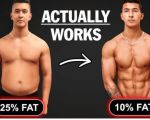The Changing Landscape of Fitness Trends in America
When I think about the fitness culture of today, it’s fascinating to reflect on how much things have changed over the decades. From the days of weightlifting in your garage to the explosion of group fitness classes and fitness apps, it’s clear that fitness has evolved in ways no one could have predicted. As someone who has been both an observer and participant in these transformations, I want to take you through the journey of fitness trends in America. Trust me, it’s been quite a ride!
The Early Days: Fitness Before the Trend
Let’s rewind the clock to the early 20th century. Fitness wasn’t quite the cultural obsession it is now. In fact, for many, staying fit wasn’t something that required special attention. Physical activity was often part of daily life – people walked, worked physically demanding jobs, and simply moved more than we do today.
However, the first seeds of modern fitness culture were planted in the 1920s with the rise of the “physical culture” movement. Figures like Jack LaLanne, who became known as the “Father of Fitness,” started to promote the idea of exercise as a health regimen. The 1950s saw an uptick in the popularity of bodybuilding, largely thanks to icons like Arnold Schwarzenegger, whose physique became a symbol of strength and masculinity.
The 1970s: The Birth of the Fitness Craze
The 1970s marked the turning point in fitness trends, as gym culture began to emerge. The rise of figureheads like Jane Fonda, who famously introduced aerobics to the masses, and the popularity of running through figures like Frank Shorter (who won Olympic gold in 1972), created a whole new fitness landscape. This period saw a surge in fitness enthusiasts—especially women—joining gyms and incorporating structured workouts into their lives.
The 1970s also brought with it the dawn of fitness apparel, with tracksuits, leg warmers, and headbands becoming staples of the workout world. It was a time when fitness was starting to be seen not just as a means to get stronger or healthier, but as a lifestyle.
The 1980s: The Boom of Aerobics and Home Fitness
The 1980s witnessed the explosion of aerobics and home fitness programs. If you were alive during this era, you probably remember the neon colors, the high-energy aerobics classes, and the rise of workout videos. Jane Fonda’s exercise tapes became a phenomenon, leading to a massive boom in home fitness. People could now follow along with their favorite instructors without leaving the comfort of their homes.
In this decade, we saw the rise of major fitness chains like Gold’s Gym, and more people were beginning to flock to fitness centers. Aerobics was a major workout trend, and it wasn’t unusual to see people doing their best moves to upbeat music. This was also the era when the concept of “fitness influencers” began, albeit through television personalities instead of social media.
The 1990s: The Rise of High-Intensity Workouts and New Technology
As we moved into the 1990s, the fitness industry began to embrace a more diverse range of workouts. High-intensity interval training (HIIT), cycling classes, and the emergence of CrossFit as a competitive sport began to reshape the way people thought about exercise. The idea that fitness wasn’t just about strength but also about endurance and cardiovascular health became more mainstream.
This decade also brought technology into the mix, as home fitness equipment like the elliptical machine and stationary bikes gained popularity. People were increasingly using gadgets to track their progress and optimize their workouts, marking the early stages of the tech-driven fitness world we live in today.
The 2000s: Fitness Goes Mainstream
The 2000s saw fitness go completely mainstream. The proliferation of fitness magazines, websites, and television networks dedicated to wellness made it clear: fitness was no longer a niche interest. It was part of everyday life. New fitness trends like Zumba, spinning, and yoga took off in this decade, and the emphasis on wellness and holistic health grew stronger.
This era also brought a wave of boutique fitness studios offering specialized classes, with offerings like pilates, barre, and kickboxing gaining popularity. People weren’t just joining gyms—they were investing in a fitness culture that catered to their specific needs and preferences.
The 2010s: Fitness and Technology Collide
When the 2010s rolled around, fitness culture became more digital than ever. Fitness apps, wearables like Fitbits, and online workout videos began to take over. It was no longer about just going to the gym; people were increasingly choosing to work out at home, on the go, or even while traveling. The app boom made fitness accessible to more people, and the rise of social media platforms like Instagram created a new wave of fitness influencers who would shape the trends of tomorrow.
The concept of “fitness as a lifestyle” reached new heights in this decade, with people embracing not only physical exercise but also nutrition, mental health, and overall wellness. Trends like mindfulness, meditation, and yoga integrated seamlessly with traditional workouts, offering a holistic approach to fitness.
The 2020s: Virtual Fitness and Wellness in a Post-Pandemic World
The COVID-19 pandemic of 2020 radically changed the fitness industry. With gyms temporarily closed and people confined to their homes, virtual fitness became the norm. Live-streamed classes, on-demand workouts, and fitness apps skyrocketed in popularity. We saw the rise of fitness influencers and online fitness communities who brought exercise into people’s living rooms.
Now, as we navigate the 2020s, fitness continues to evolve with a focus on flexibility, inclusivity, and holistic well-being. Trends like home-based HIIT workouts, virtual coaching, recovery technologies, and mindfulness-based fitness practices are gaining traction. People are also increasingly interested in fitness trends that prioritize mental health and overall wellness, moving away from the old “no pain, no gain” mentality.
The Future of Fitness: What’s Next?
As I look toward the future of fitness, I can’t help but wonder where things are headed. Will virtual fitness continue to dominate? Will we see even more personalized workouts powered by AI and virtual reality? Only time will tell. But one thing is for certain: fitness will continue to evolve, and it will remain a crucial part of our lives, helping us stay strong, healthy, and connected to ourselves.








